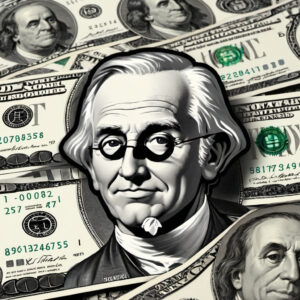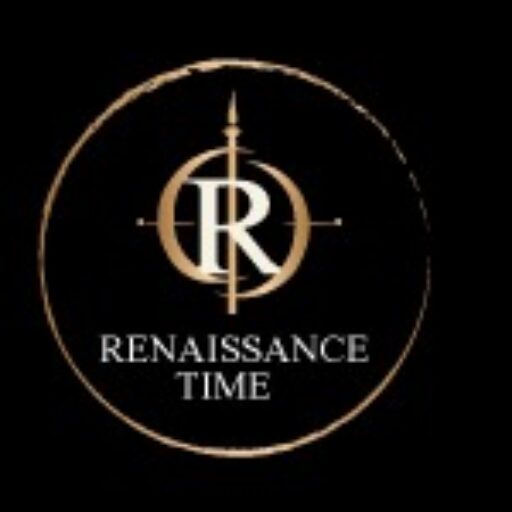
Transformation of Digital Art the U.S. Art Market
The NFT Boom in 2024: How Digital Art is Transforming the U.S. Art Market
Introduction
The art world has always been a dynamic landscape, evolving with the times and technologies that shape our society. In 2024, one of the most significant developments in this ever-changing environment is the rise of Non-Fungible Tokens (NFTs). NFTs, a type of digital asset that represents ownership of unique items or content, have revolutionized how art is created, bought, and sold. What started as a niche interest among tech enthusiasts has now grown into a multi-billion-dollar market, with artists, collectors, and investors across the United States taking notice.
This blog will explore the NFT boom of 2024, delving into how digital art is transforming the U.S. art market, the key players behind this movement, and what the future may hold for NFTs in the art world.
The Evolution of NFTs: From Niche to Mainstream
NFTs first gained widespread attention in the art world in 2021 when digital artist Beeple sold his work “Everydays: The First 5000 Days” for a staggering $69 million at Christie’s auction house. This sale was a watershed moment, signaling to the world that digital art could be as valuable as traditional mediums. NFTs themselves are unique digital assets verified using blockchain technology, making each token one-of-a-kind and easily tradable.
In the years following Beeple’s historic sale, NFTs have grown from a curiosity into a mainstream phenomenon. By 2024, the NFT market has matured, with more established artists, galleries, and collectors participating in the space. The technology behind NFTs has also improved, with enhanced security measures, better platforms for trading, and more environmentally friendly blockchain solutions addressing earlier criticisms about the ecological impact of minting NFTs.
Why NFTs Are Trending in 2024
Several factors have contributed to the sustained interest in NFTs in 2024. One of the most significant is the democratization of the art market. Traditional art markets have long been dominated by wealthy collectors, established artists, and prestigious galleries. NFTs have disrupted this hierarchy by allowing artists of all backgrounds to sell their work directly to a global audience without the need for intermediaries. This has opened up opportunities for emerging artists who might not have had access to traditional art markets.
Moreover, the integration of NFTs with emerging technologies like virtual reality (VR) and augmented reality (AR) has created new ways for people to experience art. Collectors can now interact with digital artworks in immersive environments, making the ownership of digital assets more tangible and engaging.
Another reason for the NFT boom is the increasing acceptance of digital art as a legitimate medium. In the past, digital art was often dismissed as inferior to traditional forms like painting or sculpture. However, the unique qualities of digital art—its ability to be interactive, its potential for endless reproduction, and its seamless integration with modern technology—have won over critics and collectors alike.
do you want to read articles about how
The Impact of AI on the Art World
The Players Behind the NFT Boom
The NFT market in 2024 is shaped by a diverse group of players, including artists, collectors, platforms, and investors.
1. Artists
Many of the artists leading the NFT movement come from digital art backgrounds, but the space has also attracted creators from traditional mediums looking to explore new forms of expression. Prominent figures like Beeple continue to dominate the headlines, but there are many other artists making waves. For example, American artist Pak has become renowned for his conceptual art projects, which challenge the very notions of value and ownership in the digital space. Meanwhile, Krista Kim has gained recognition for her “Mars House,” the world’s first digital NFT house, blending art, architecture, and technology.
2. Collectors and Investors
The profile of NFT collectors has evolved significantly since the early days of the market. Initially dominated by crypto enthusiasts and tech-savvy investors, the market now includes traditional art collectors who have embraced digital assets. High-profile collectors like Justin Sun, the founder of cryptocurrency platform TRON, and MetaKovan, who purchased Beeple’s “Everydays,” have been instrumental in driving up the value of NFTs. Their involvement has added legitimacy to the market and attracted a broader range of investors.
3. Platforms:
Platforms that facilitate the creation, sale, and trading of NFTs play a crucial role in the ecosystem. OpenSea remains one of the largest NFT marketplaces, offering a wide range of digital assets from art to music to virtual real estate. Other platforms like Rarible, Foundation, and SuperRare have also carved out significant niches, each catering to different types of artists and collectors. These platforms have become not just marketplaces but also communities where artists and collectors can connect and collaborate.
4. Galleries and Institutions:
As NFTs have gained acceptance, traditional galleries and institutions have also started to participate in the market. In 2024, more galleries are hosting NFT exhibitions, and museums are adding digital art to their collections. The Whitney Museum of American Art, for example, has curated an entire section dedicated to digital and NFT art, recognizing the medium’s growing importance in contemporary culture.
Impact on the U.S. Art Market
The rise of NFTs has had a profound impact on the U.S. art market, transforming everything from how art is valued to how it is consumed.
1. **Market Growth**:
The NFT market has grown exponentially in the past few years, with some estimates suggesting that it could surpass $100 billion in annual sales by the end of 2024. This growth has been driven by increased participation from both buyers and sellers, as well as the development of more sophisticated platforms that make it easier to trade NFTs.
2. **Increased Accessibility**:
NFTs have made the art market more accessible to a broader range of people. Artists who might have struggled to break into traditional galleries can now reach a global audience through NFT platforms. Similarly, collectors who may have been priced out of the traditional art market can invest in digital art at various price points.
3. **New Revenue Streams for Artists**:
One of the most significant advantages of NFTs for artists is the potential for new revenue streams. Unlike traditional art sales, where an artist typically only profits from the initial sale of their work, NFTs can include smart contracts that ensure the artist receives a percentage of any future sales. This means that artists can continue to benefit financially as their work appreciates in value.
4. **Challenges and Criticisms**:
Despite its rapid growth, the NFT market is not without challenges. One of the most significant criticisms has been the environmental impact of blockchain technology, particularly the energy-intensive process of minting NFTs. In response, many platforms and artists have started using more sustainable blockchain networks like Ethereum 2.0, which reduces energy consumption.
Additionally, the market’s volatility has raised concerns about the long-term value of NFTs. While some digital assets have sold for millions of dollars, others have seen their value plummet, leading to questions about the stability and sustainability of the market.
The Role of Technology in the NFT Boom
Technology has been at the heart of the NFT boom, driving innovation and expanding the possibilities for digital art.
1. **Blockchain Technology**:
Blockchain is the foundational technology behind NFTs, providing the infrastructure for creating, verifying, and trading digital assets. The decentralized nature of blockchain ensures that NFTs are secure and immutable, giving collectors confidence in the authenticity and ownership of their digital art.
2. **Virtual Reality and Augmented Reality**:
VR and AR technologies have enhanced the experience of owning and interacting with NFTs. Collectors can now view digital art in immersive environments, whether through VR headsets or AR apps that project digital images into the real world. This has made the experience of owning NFTs more tangible and engaging.
3. **Artificial Intelligence**:
AI is also beginning to play a role in the creation of NFTs. Some artists are using AI algorithms to generate unique digital art pieces, pushing the boundaries of creativity and raising questions about the role of the artist in the age of AI. Additionally, AI is being used to curate NFT collections, analyze market trends, and even predict the future value of digital assets.
The Future of NFTs in the U.S. Art Market
As we move further into 2024, the future of NFTs in the U.S. art market looks promising, but not without challenges.
1. Continued Growth and Innovation:
The NFT market is likely to continue growing, with more artists, collectors, and institutions participating. As technology advances, we can expect to see even more innovative forms of digital art, from interactive NFTs to AI-generated works that challenge our understanding of creativity.
2. **Integration with Traditional Art Markets**:
While NFTs are often seen as separate from the traditional art world, there is growing integration between the two. More galleries and auction houses are incorporating NFTs into their offerings, and hybrid exhibitions that combine digital and physical art are becoming more common.
3. **Regulation and Legal Considerations**:
As the NFT market matures, it is likely to face increased regulation. Issues like copyright infringement, fraud, and market manipulation are already attracting the attention of regulators, and artists and collectors will need to navigate a more complex legal landscape.
4. **Sustainability and Ethical Considerations**:
The environmental impact of NFTs will continue to be a significant issue, and the industry will need to adopt more sustainable practices to address these concerns. Additionally, the ethical implications of AI-generated art and the potential for exploitation in the NFT market will need to be carefully considered.
**Conclusion**
The NFT boom of 2024 represents a significant shift in the U.S. art market, with digital art becoming increasingly mainstream and accessible. While the market is still evolving, it is clear that NFTs have the potential to reshape how we think about art, ownership, and value. As artists, collectors, and institutions continue to explore the possibilities of this new medium, the future of NFTs promises to be both
